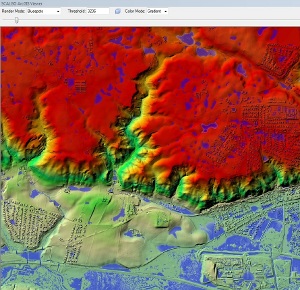Quite a few interesting news in this batch mode edition.
From the open source front:
- It was the first time I heard about the open source LSI Viewer, an online Shapefile viewer
- There's the new MapProxy 1.5.0 released
- And Portable GIS is now at version 3.1
- It is also the first time we mention GisClient, "an open source software written in AJAX, Javascript, PHP/MapScript that offers an innovative way to manage complex GIS projects. The main strength in it is that allows to configure a big range of tools and functionalities easily and quickly."
- If you're working with the U.S. Federal government, take a look at FedGeo Day, to be held in Washington DC on February 28, here's the official website
- Here's the MapBox New Features Roundup
- Regarding QGIS, visualising QGIS data in 3D with Blender and on Sharing QGIS Symbols
- Here's the just released OSGeo Annual Report
- A bugfix, PostGIS 2.0.2 has been released
- And there's the call for papers and new website for FOSS4G, in the U.K. this year
- The open source ArcGIS for Local Government Apps Available Now on GitHub
From the Google front:
- Google announced two new features for the Google Places API: Place Photos and Radar Search.
- Google wants us to know that they're listening to our Google Maps feedback
- The GEB shares links for The making of the "Powers of Ten", the 1977 video
- The GEB also reports that Botswana not happy with Google Street View, since it "compromise their security"
In the miscellaneous category:
- APB informs us about cloud-offloaded GPS (CO-GPS) to decrease power needed by GPS devices
- DM reports that the National Geologic Map Database Gets a Face Lift
- We now have drones that can infect with software virus other drones
- Here's an OGC summary of Location Business Summit USA
- Augmented reality to the extreme, Belgian Researchers Build LCD Contact Lenses
- Extending their offer, MapBox Teams Up with DigitalGlobe on Satellite Imagery
- Here's the ArcGIS Online World Topographic Map December updates, and also Esri-related, Esri Updates Terms of Use on (Free) Personal Accounts for ArcGIS Online
- On geospatial jobs, APB shares two interesting entries; NZ Report on Geospatial Skill Shortage and Four of Eight Emerging Careers for Demand Geospatial Skills
in the maps category:
- Here's an entry named Using Series of Maps to Represent Changes in Time: How Diabetes Swept the U.S.
- VerySpatial links to an entry and map on the geography of US charity
- Let's end this issue with a fake map on procrasti-nation



